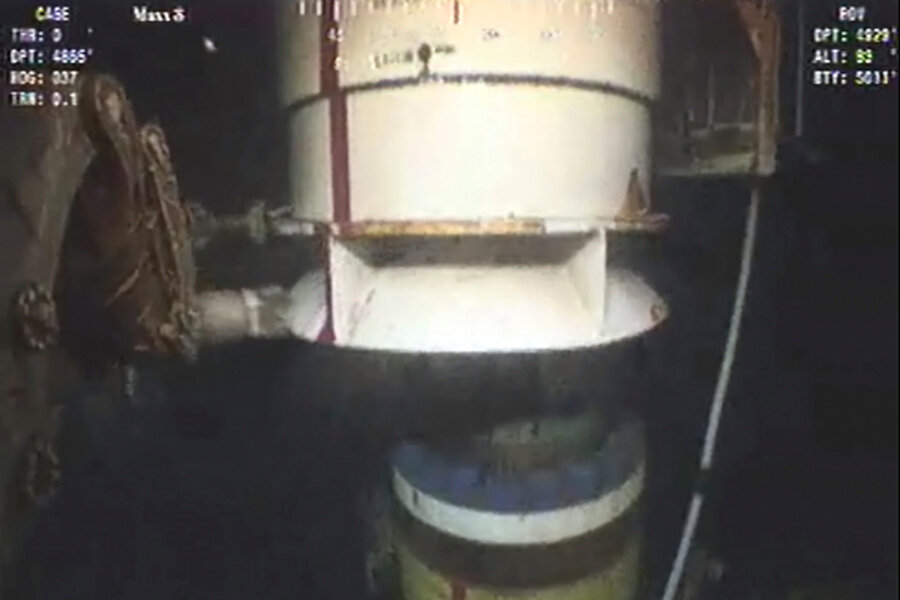Is Gulf oil spill gusher contained? New cap appears to be on.
Loading...
Pictures from the BP live feed Monday evening suggested that BP has placed a new cap on the runaway well at the center of the Gulf oil spill.
BP has not yet offered confirmation, but if correct, the successful placement of the cap would bring BP a step closer to fully containing the spill.
The live BP video feed showed the new cap, which is intended to provide a tighter seal than the one previously in place, fitted atop the well. It is possible that the new cap could stop the flow of oil entirely, allowing BP to shut down its collection efforts.
IN PICTURES: Louisiana oil spill
In this scenario, the well would be effectively stanched – gushing virtually no oil into the Gulf of Mexico – though BP would still want to finish drilling its relief well, which would provide a far more secure stoppering of the well. The relief well will be finished no earlier than the end of the month.
Once the new cap is fully installed and secure, engineers will run a series of tests during the next 48 hours to see if the cap can remain closed. They will be looking to see if the well bore – which runs from beneath the cap down 17,000 feet to the oil reservoir – is in good condition.
To do this, they will focus on pressure readings. If the pressure is high, that suggests the well bore is sound – all the oil is remaining within the well bore and pushing up against the cap. If pressure is low, that suggests that the well bore is damaged and oil is escaping through cracks in the well walls – and could eventually erupt through the sea floor elsewhere in a new gusher.
In the event of low pressure readings, BP will have to revert to siphoning oil to the surface through pipes attached to the new cap as well as two others connected to the sides of the failed blowout preventer.
BP also made progress in this effort Monday, successfully connecting a new vessel to one of the valves on the side of the blowout preventer, called the "kill line." The new ship, the Helix Producer, has the largest processing capacity of any ship yet used in the collection effort – as many as 25,000 barrels (1 million gallons) of oil a day.
Oil should be reaching the Helix “shortly,” and it will take several days to get operations to full capacity, said Doug Suttles, BP’s chief operating officer of exploration and production, in a briefing to reporters Monday afternoon.
The introduction of the Helix, along with the pipes leading from the new cap, mean that BP might be able to collect all the oil if it has to reopen the cap.
Neither will be needed, however, if BP finds that the well bore is sound and it can leave the cap shut.
The new cap is the latest in a series of procedures to contain the oil that has been gushing from the well since the Deepwater Horizon rig exploded April 20. Mr. Suttles said the current operation was not one they would have considered at first but has emerged from 83 days of successes and failures.
“I had to take these steps to learn the things I learned,” he said. “Without taking those steps it’s unlikely I would have known what I know now.”
IN PICTURES: Louisiana oil spill
Related:





